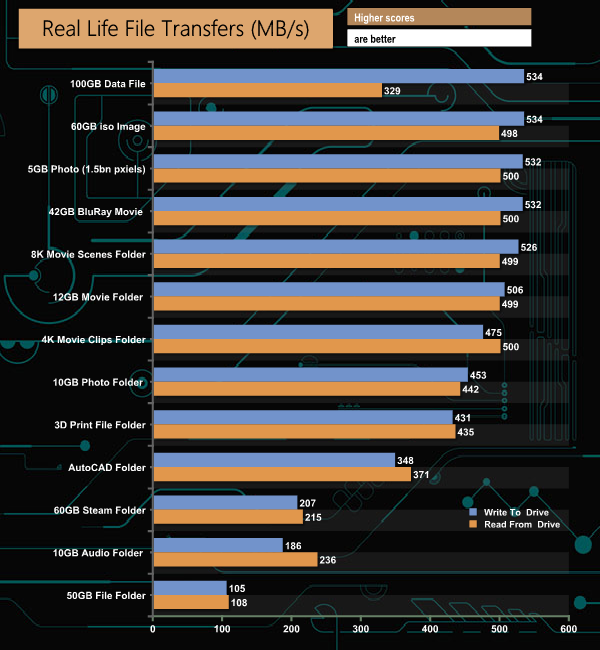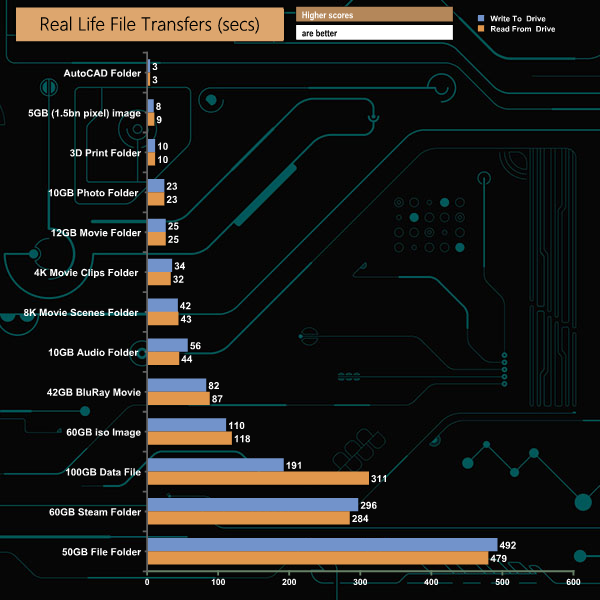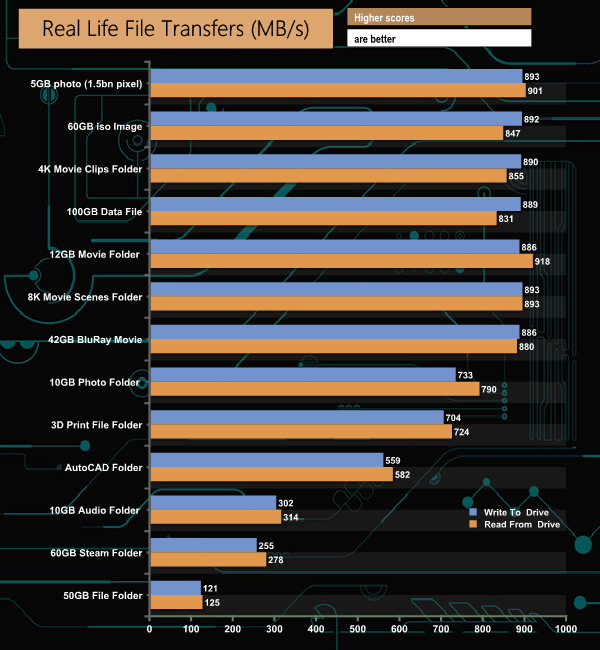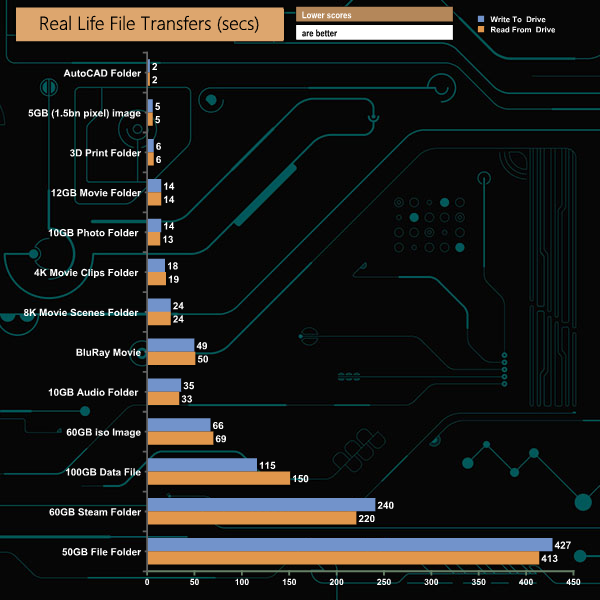To test real-life performance of a drive we use a mix of folder/file types and by using the FastCopy utility (which gives a time as well as MB/s result) we record the performance of drive reading from & writing to a 256GB Samsung SSD850 PRO.
We use the following file/folder types:
- 100GB data file.
- 60GB iso image.
- 60GB Steam folder – 29,521 files.
- 50GB File folder – 28,523 files.
- 12GB Movie folder – (15 files – 8 @ .MKV, 4 @ .MOV, 3 @ MP4).
- 10GB Photo folder – (304 files – 171 @ .RAW, 105 @ JPG, 21 @ .CR2, 5 @ .DNG).
- 10GB Audio folder – (1,483 files – 1479 @ MP3, 4 @ .FLAC files).
- 5GB (1.5bn pixel) photo.
- BluRay Movie – 42GB.
- 21GB 8K Movie demos – (11 demos)
- 16GB 4K Raw Movie Clips – (9 MP4V files).
- 4.25GB 3D Printer File Folder – (166 files – 105 @ .STL, 38 @ .FBX, 11 @ .blend, 5 @ .lwo, 4 @ .OBJ, 3@ .3ds).
- 1.5GB AutoCAD File Folder (80 files – 60 @ .DWG and 20 @.DXF).
There’s no doubting that the X8 is a fast external drive especially dealing with larger file sizes. It took just 1m 8s to transfer the 60GB iso image to the X8, and just under the 2-minute mark going back the in the other direction. Even small bity data is dealt with pretty efficiently, with our 60GB Steam folder taking just 4m 9s to be copied to the drive and 4m 7s for the return journey. The only slight wobble came when the 100GB data file was being read back.
To get a measure of how much faster the X8 can transfer files, we took the SATA SSD out of the equation and used the same files but transferred to and from a 512GB Toshiba OCZ RD400 NVMe drive.
Swapping over to the NVMe drive saw the performance when dealing with large file sizes really ramp up, with reads topping 900MB/s and writes getting very close to 900MB/s on a couple of occasions.
 KitGuru KitGuru.net – Tech News | Hardware News | Hardware Reviews | IOS | Mobile | Gaming | Graphics Cards
KitGuru KitGuru.net – Tech News | Hardware News | Hardware Reviews | IOS | Mobile | Gaming | Graphics Cards






